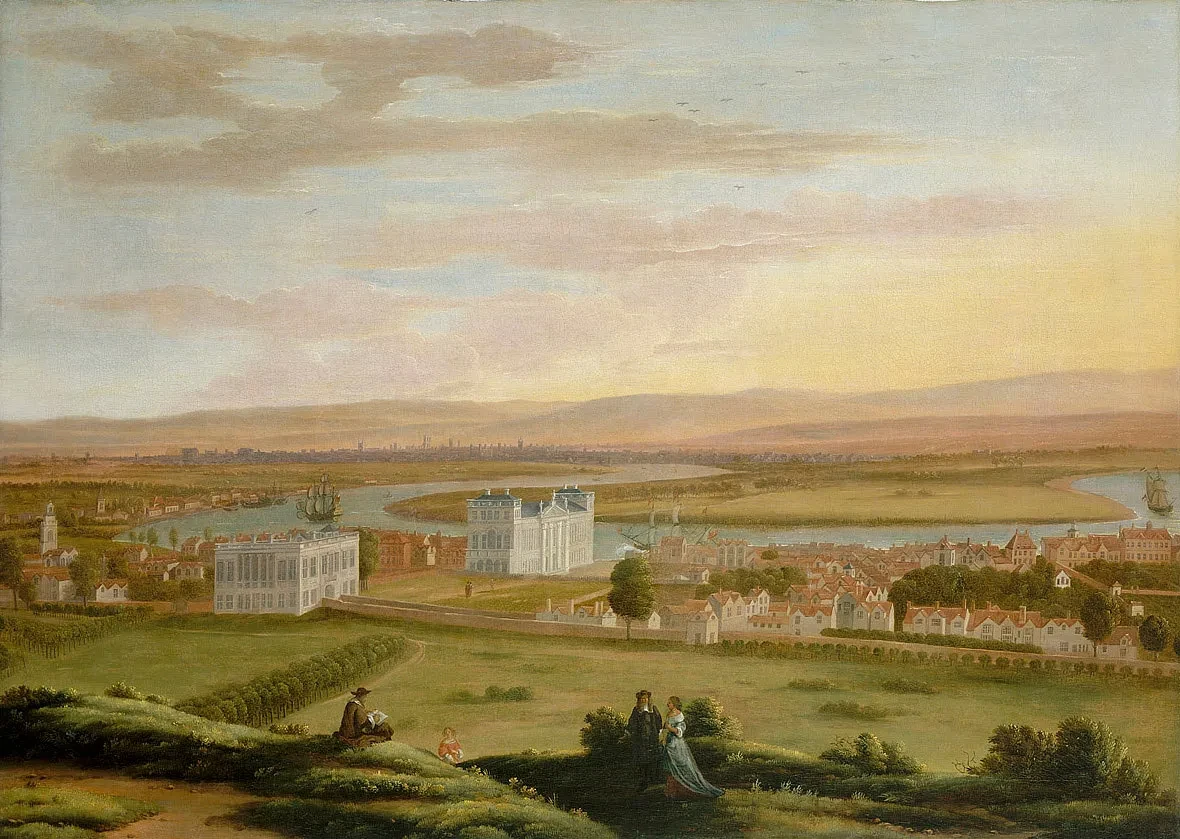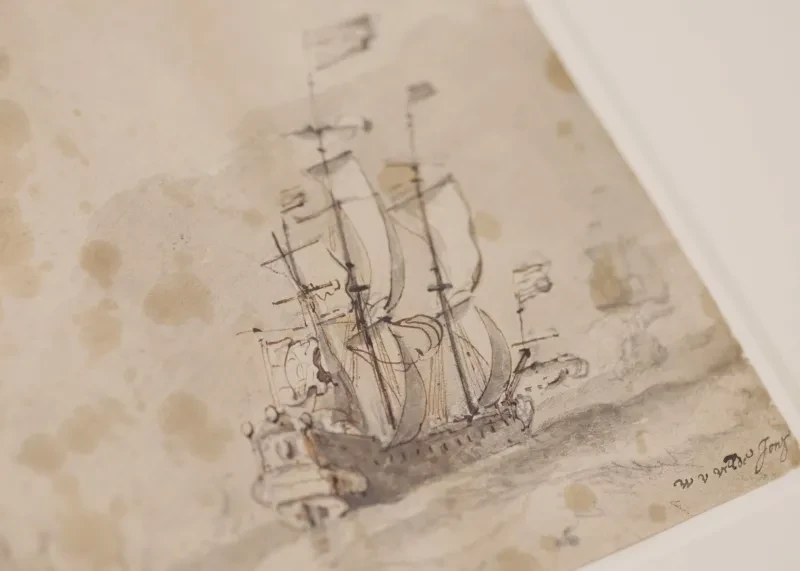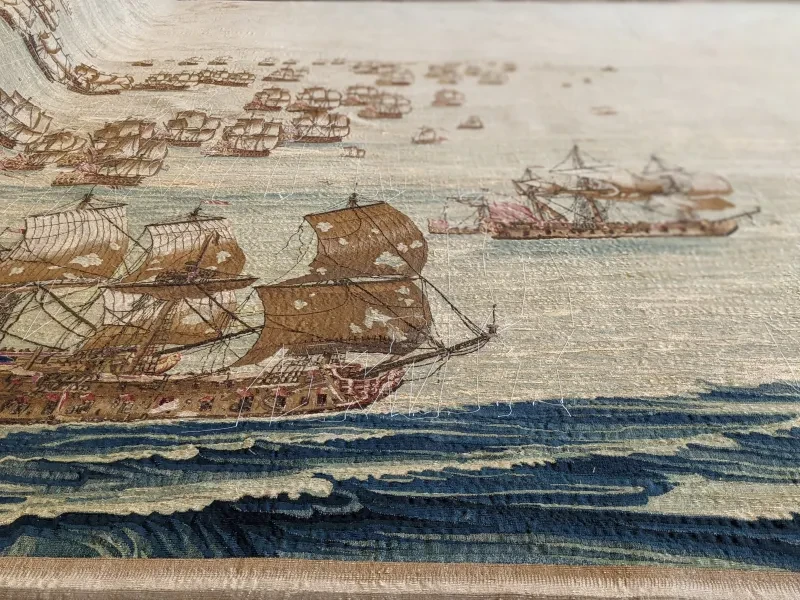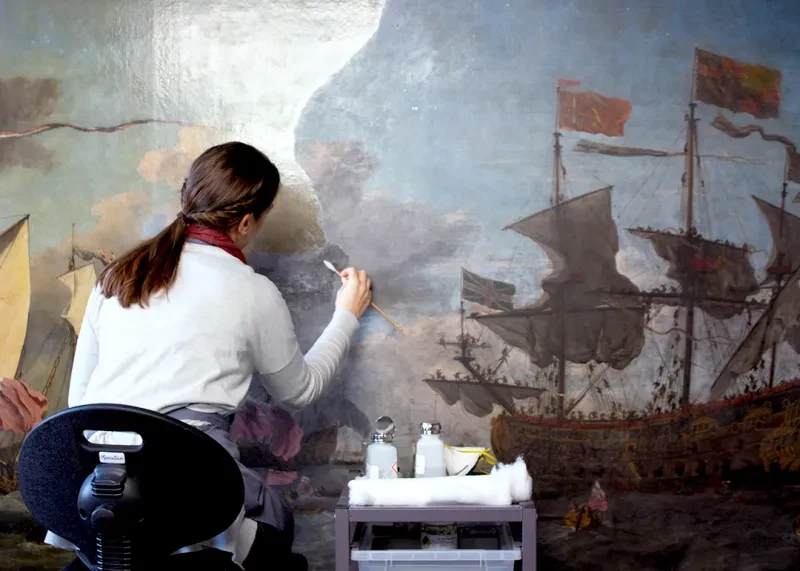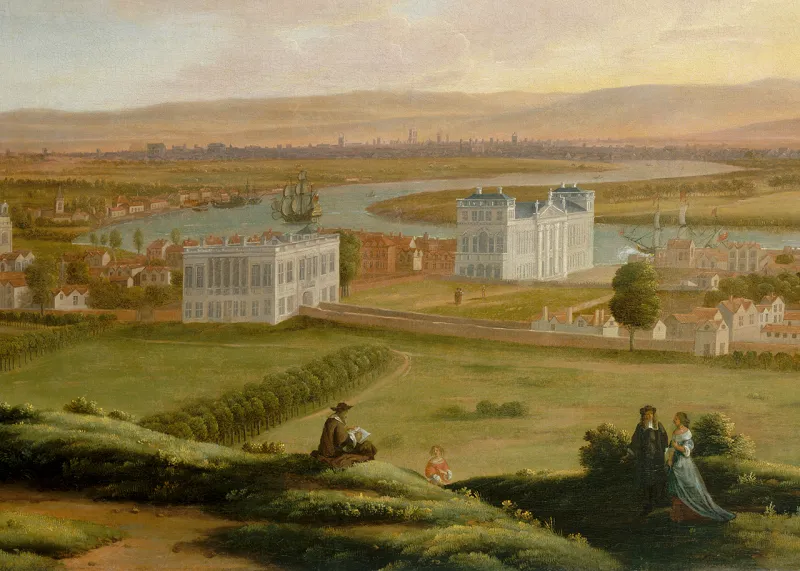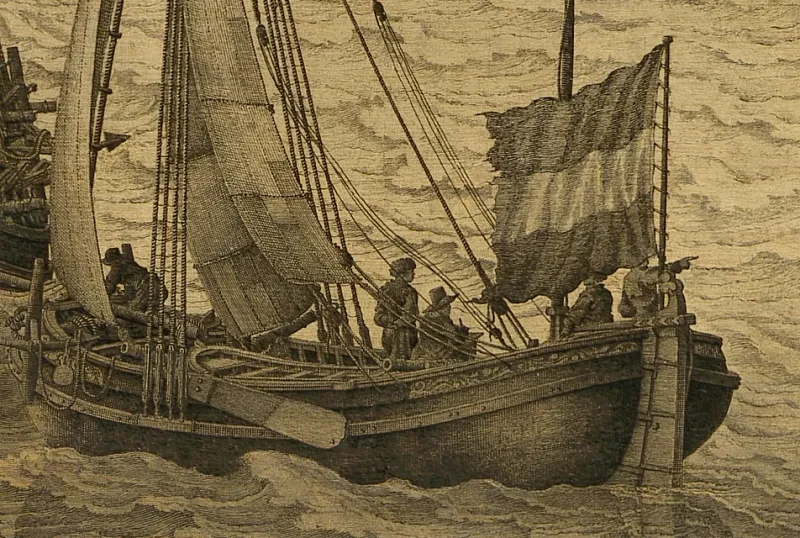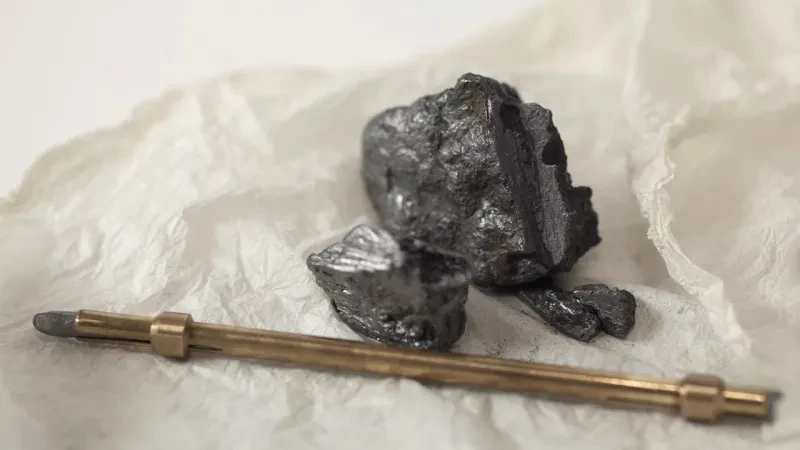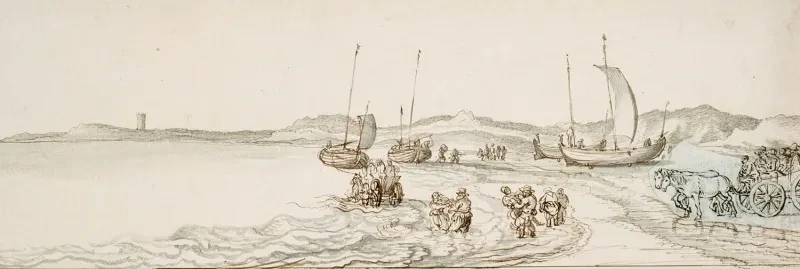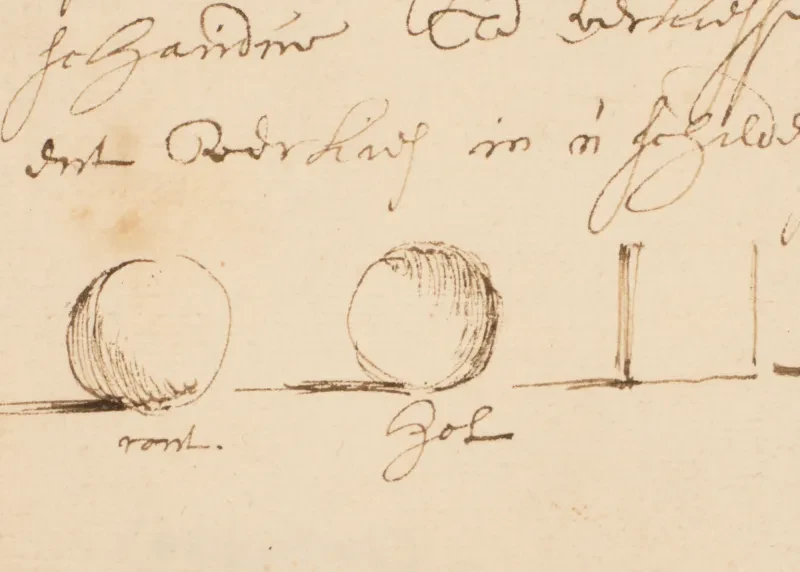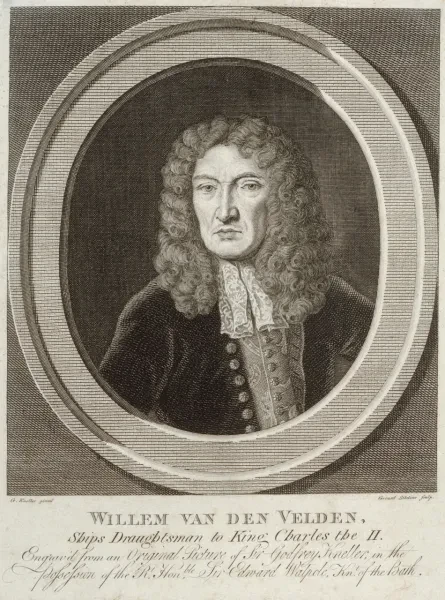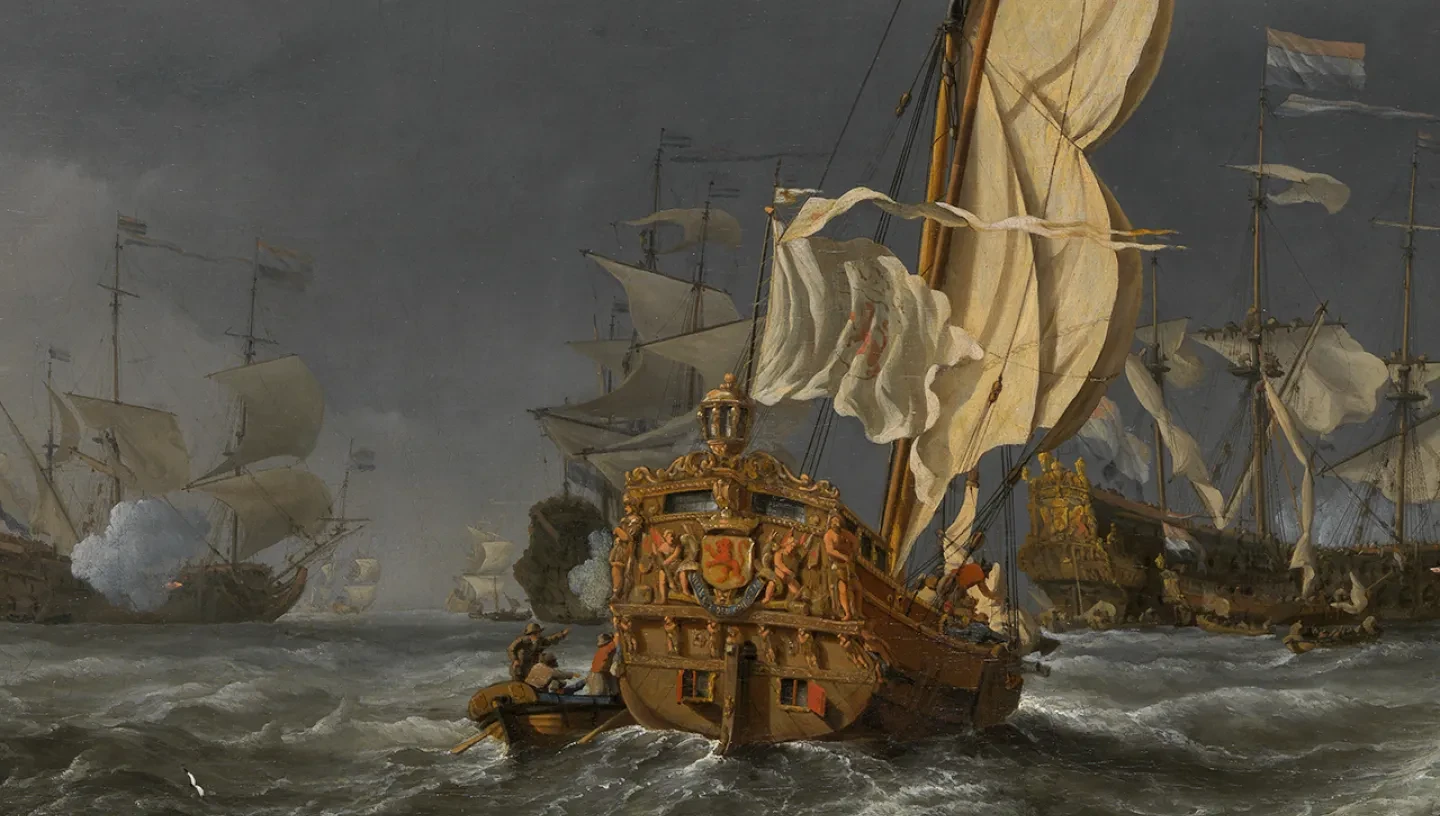
Willem van de Velde the Elder and his son, Willem van de Velde the Younger, were the most influential maritime artists of the 17th century.
They were renowned for their dramatic paintings of stormscapes and nautical life, as well as their meticulously drawn depictions of ships and naval battles.
In the winter of 1672/1673, the artists left their homeland in the Dutch Republic for England.
King Charles II took a particular interest in the father-son duo, offering them an annual salary and a studio space at the Queen’s House in Greenwich.
From this workshop, the artists revolutionised maritime art in Britain, inspiring generations of artists including J.M.W. Turner.
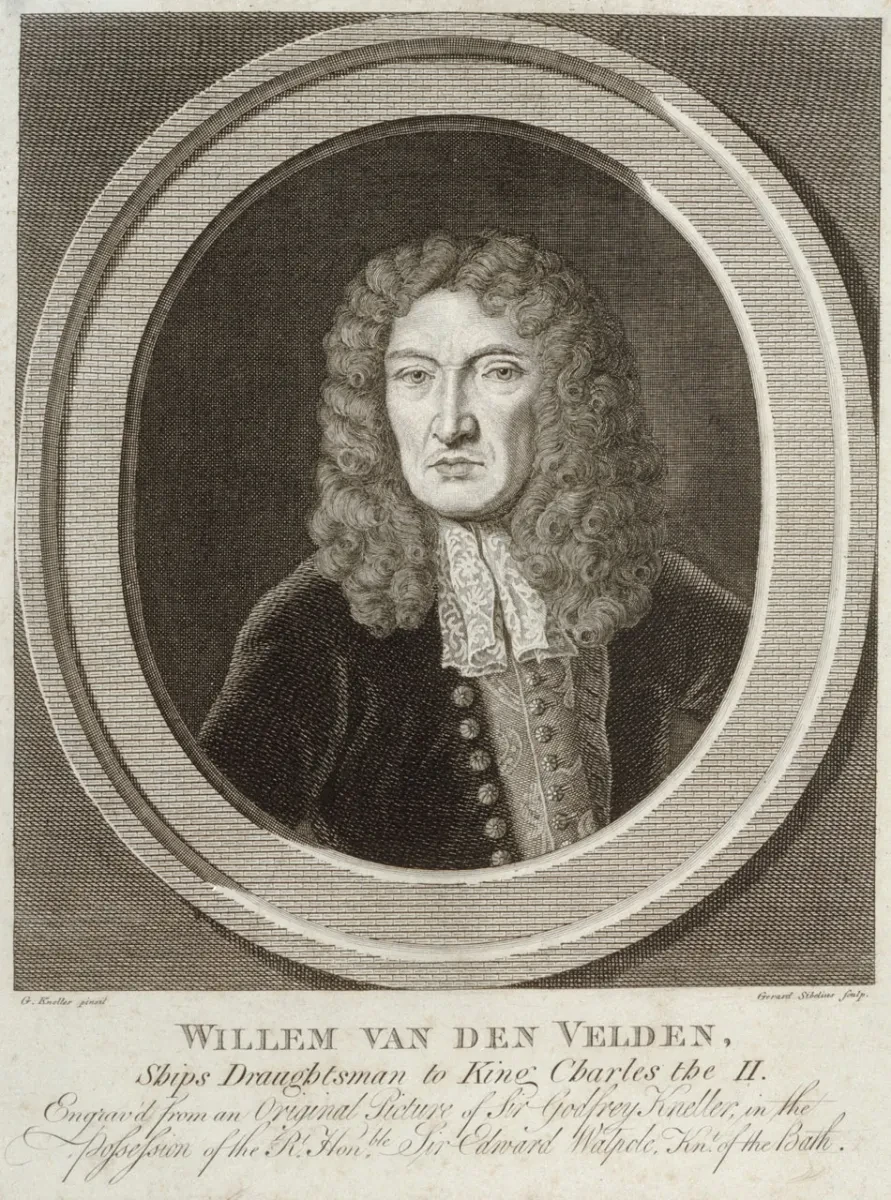
Van de Velde the Elder
Willem van de Velde was born in Leiden in 1611. His father was a barge master, and from an early age Willem joined his father at sea.
By the 1640s he had established himself as a ‘ship’s draughtsman’, often accompanying Dutch fleets at sea to record ships and battles first hand.
“Think about what it must have taken to sketch at sea in a small boat, known as a galliot, ducking and diving between much larger ships, seeing incredible human suffering at first hand,” says Dr Allison Goudie, Curator of Art at Royal Museums Greenwich.
“It would have been much like a photojournalist of today going into a war zone, such was the danger Van de Velde was willing to put himself in for the sake of his art.”
Back in his studio, Van de Velde would take these sketches and work them up into more detailed ship portraits and panoramic drawings. These would provide the source material for his trademark ‘pen paintings’: highly detailed monochrome pictures created using graphite and ink.
Work in focus: The Battle of Scheveningen
In this intricate pen painting, Van de Velde the Elder depicts an altercation between the English and Dutch fleet at the Battle of Scheveningen – the last battle of the First Anglo-Dutch War.
In the bottom left of the work, Van de Velde has drawn himself into the painting. He is depicted as a seated figure with a broad-brimmed hat, holding a drawing block and a pencil. Use the slider tool to zoom in on his boat.
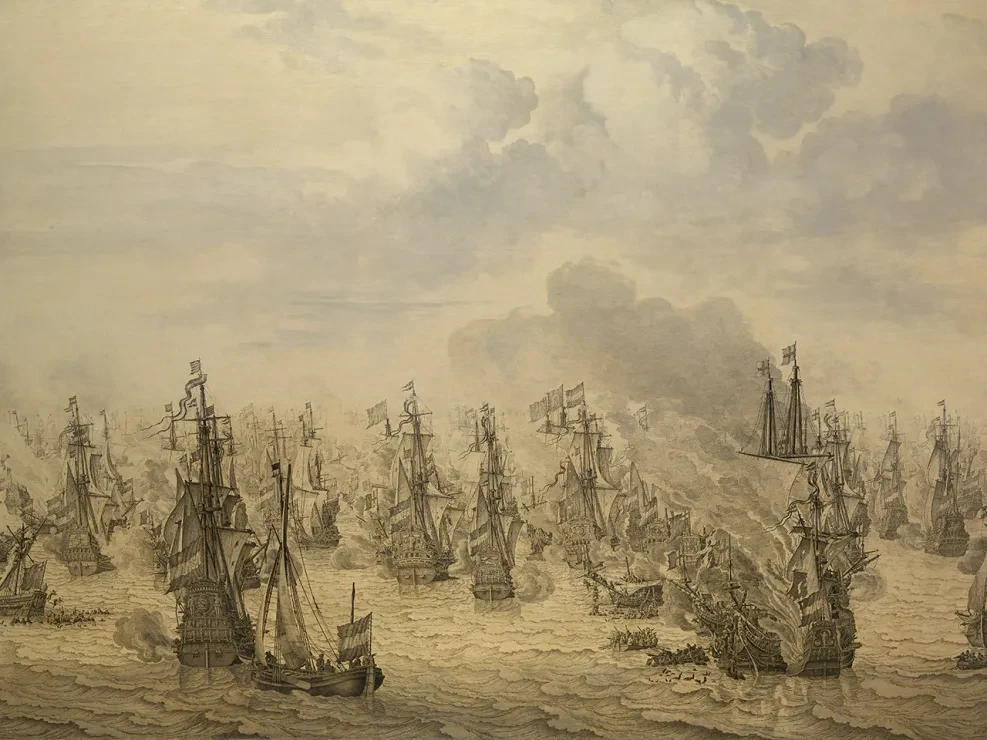
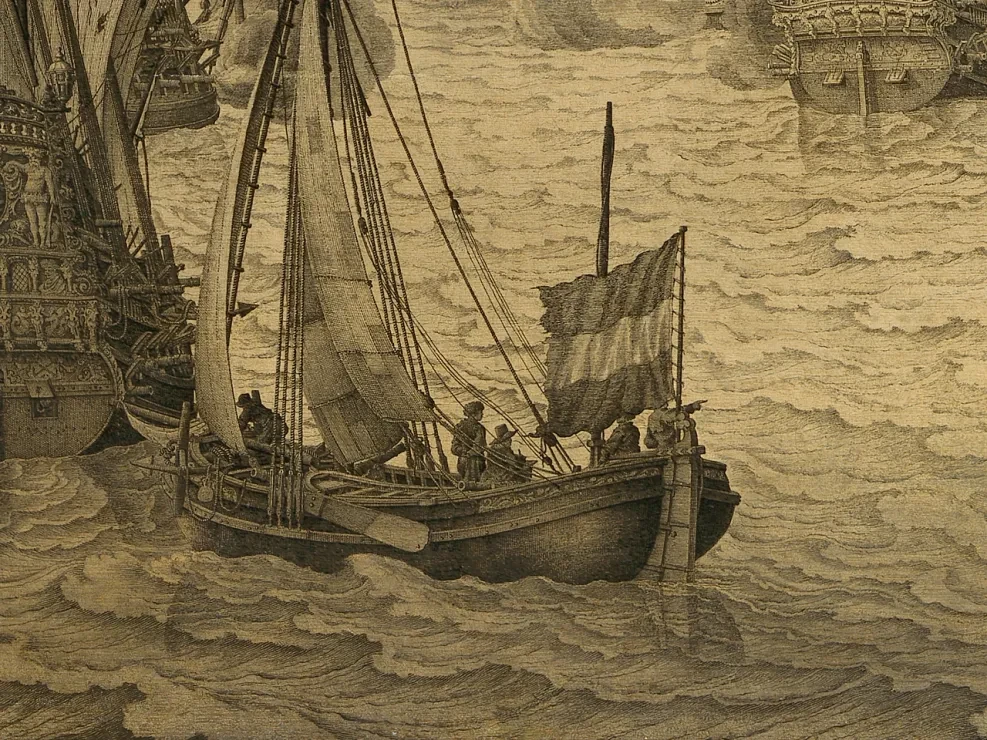
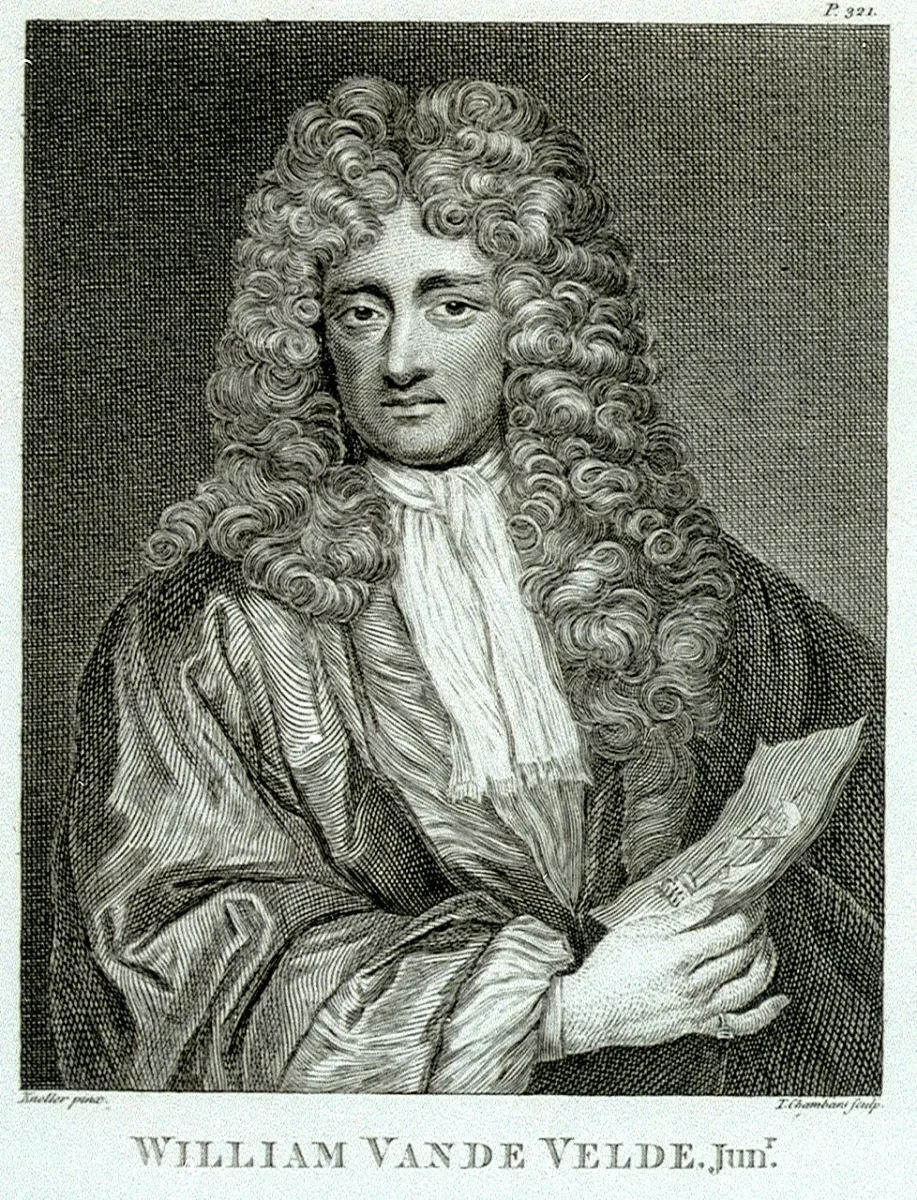
Van de Velde the Younger
Like his father, Van de Velde the Younger was a skilled marine artist.
But while Van de Velde the Elder specialised in drawings and pen paintings, Van de Velde the Younger was known for his oil paintings, depicting life at sea in full colour.
Born in Amsterdam in 1633, Van de Velde the Younger trained as a painter with the marine artist Simon de Vlieger. This was a very different artistic education to that of his self-taught father.
“Van de Velde the Elder was keen that his son trained with a professional artist where he would learn the craft of painting in oil,” Goudie says.
Celebrated for his creative flair, Van de Velde the Younger worked closely with his father to bring their artistic visions to life. Often, he would use his father’s drawings as a guide to create his own masterpieces.
“Van de Velde the Elder was a master of detail, whereas Van de Velde the Younger was a master of light,” Goudie says. “The Elder and Younger had complementary talents, and each was key to the success of the studio business.”
Work in focus: A Royal Visit to the Fleet in the Thames Estuary
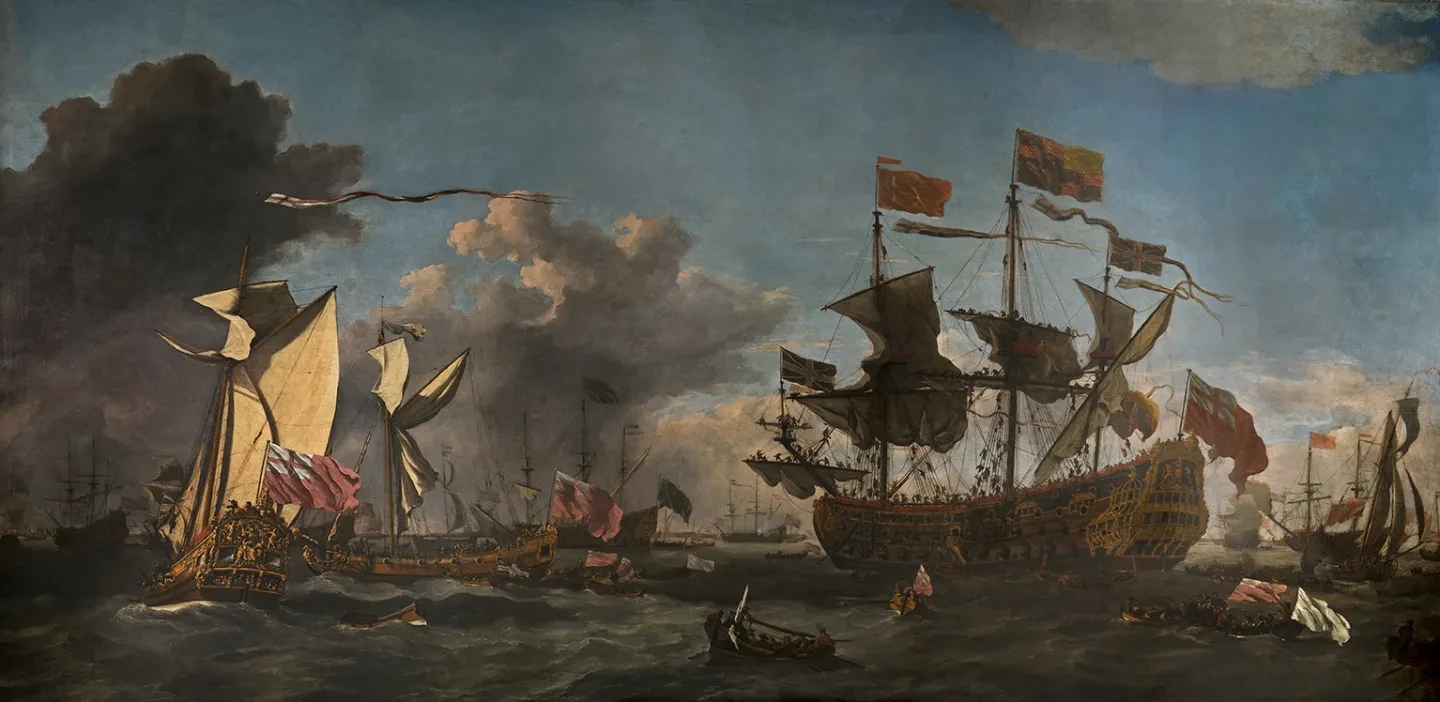
This arresting seascape depicts the meeting of Charles II and his brother, James, Duke of York, on board the Prince in 1672. At almost four metres wide, the painting is one of the largest ever made by Willem van de Velde.
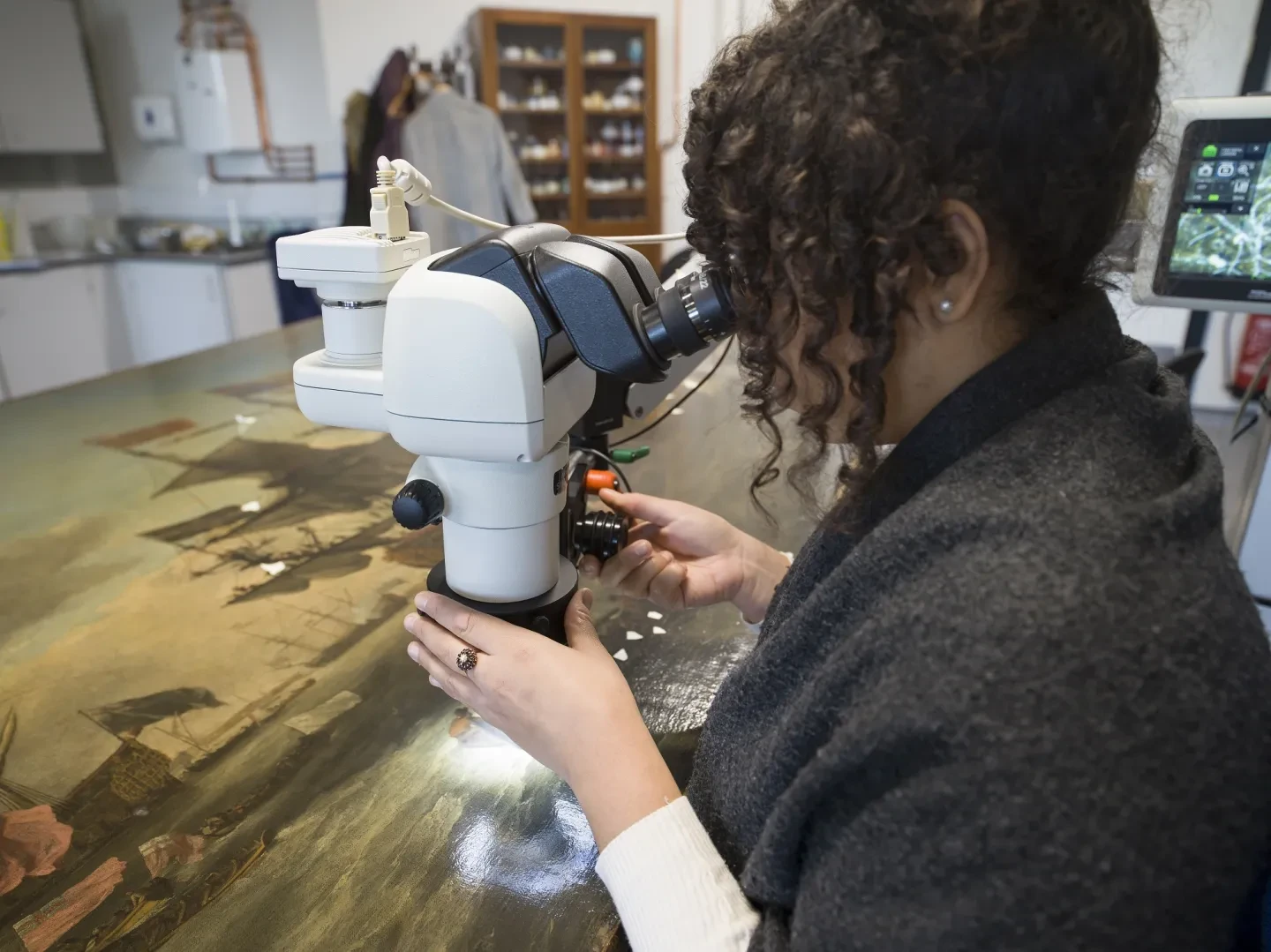
Since 2020 Royal Museums Greenwich specialists have been carrying out vital conservation work on the painting. The treated work is now back on display in the Queen's House in Greenwich, allowing visitors to fully appreciate Van de Velde's skill.
The Van de Veldes in Greenwich
The Van de Veldes were among a host of artists who left Amsterdam during 1672, the so-called 'Disaster Year' of the Dutch Republic. The Van de Veldes were privileged among the artists who resettled in England during this period however, because they enjoyed royal patronage.
“King Charles II incentivised the Van de Veldes to stay in England by giving them a salary of £100 each per year, as well as a studio space at the Queen’s House in Greenwich,” explains Goudie.
“Greenwich was a site of constant maritime activity with ships and all sorts of different craft coming and going,” Goudie continues. “This was hugely important to the Van de Veldes because it provided an endless amount of inspiration for their compositions."
Maritime art and the Van de Veldes
The Van de Veldes’ studio business established marine painting as a vital strand of British art and cultural identity. Long after their deaths, the Van de Veldes inspired generations of artists including J.M.W. Turner, who owned a number of Van de Velde drawings.
Royal Museums Greenwich is now home to the world’s largest collection of works by the Van de Veldes, including pen and oil paintings, a huge tapestry designed by Van de Velde the Elder, as well as almost 1500 drawings.
“The Van de Veldes’ influence on British marine painting in the century after their deaths can hardly be overstated,” Goudie says. “Not until Turner, at the beginning of the 19th century, did British marine painting step out of the long shadow cast by the Van de Veldes.”
